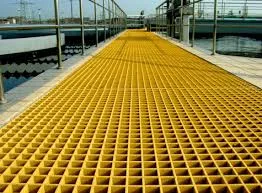
-
 Afrikaans
Afrikaans -
 Albanian
Albanian -
 Amharic
Amharic -
 Arabic
Arabic -
 Armenian
Armenian -
 Azerbaijani
Azerbaijani -
 Basque
Basque -
 Belarusian
Belarusian -
 Bengali
Bengali -
 Bosnian
Bosnian -
 Bulgarian
Bulgarian -
 Catalan
Catalan -
 Cebuano
Cebuano -
 China
China -
 China (Taiwan)
China (Taiwan) -
 Corsican
Corsican -
 Croatian
Croatian -
 Czech
Czech -
 Danish
Danish -
 Dutch
Dutch -
 English
English -
 Esperanto
Esperanto -
 Estonian
Estonian -
 Finnish
Finnish -
 French
French -
 Frisian
Frisian -
 Galician
Galician -
 Georgian
Georgian -
 German
German -
 Greek
Greek -
 Gujarati
Gujarati -
 Haitian Creole
Haitian Creole -
 hausa
hausa -
 hawaiian
hawaiian -
 Hebrew
Hebrew -
 Hindi
Hindi -
 Miao
Miao -
 Hungarian
Hungarian -
 Icelandic
Icelandic -
 igbo
igbo -
 Indonesian
Indonesian -
 irish
irish -
 Italian
Italian -
 Japanese
Japanese -
 Javanese
Javanese -
 Kannada
Kannada -
 kazakh
kazakh -
 Khmer
Khmer -
 Rwandese
Rwandese -
 Korean
Korean -
 Kurdish
Kurdish -
 Kyrgyz
Kyrgyz -
 Lao
Lao -
 Latin
Latin -
 Latvian
Latvian -
 Lithuanian
Lithuanian -
 Luxembourgish
Luxembourgish -
 Macedonian
Macedonian -
 Malgashi
Malgashi -
 Malay
Malay -
 Malayalam
Malayalam -
 Maltese
Maltese -
 Maori
Maori -
 Marathi
Marathi -
 Mongolian
Mongolian -
 Myanmar
Myanmar -
 Nepali
Nepali -
 Norwegian
Norwegian -
 Norwegian
Norwegian -
 Occitan
Occitan -
 Pashto
Pashto -
 Persian
Persian -
 Polish
Polish -
 Portuguese
Portuguese -
 Punjabi
Punjabi -
 Romanian
Romanian -
 Russian
Russian -
 Samoan
Samoan -
 Scottish Gaelic
Scottish Gaelic -
 Serbian
Serbian -
 Sesotho
Sesotho -
 Shona
Shona -
 Sindhi
Sindhi -
 Sinhala
Sinhala -
 Slovak
Slovak -
 Slovenian
Slovenian -
 Somali
Somali -
 Spanish
Spanish -
 Sundanese
Sundanese -
 Swahili
Swahili -
 Swedish
Swedish -
 Tagalog
Tagalog -
 Tajik
Tajik -
 Tamil
Tamil -
 Tatar
Tatar -
 Telugu
Telugu -
 Thai
Thai -
 Turkish
Turkish -
 Turkmen
Turkmen -
 Ukrainian
Ukrainian -
 Urdu
Urdu -
 Uighur
Uighur -
 Uzbek
Uzbek -
 Vietnamese
Vietnamese -
 Welsh
Welsh -
 Bantu
Bantu -
 Yiddish
Yiddish -
 Yoruba
Yoruba -
 Zulu
Zulu
Creating a Comprehensive Guide for GRP Shell Implementation
Understanding GRP Shell An Overview
GRP, or Glass Reinforced Plastic, is a composite material that combines the tensile strength of glass fibers with the flexibility and formability of plastics. One of the most common applications of GRP is in the production of GRP shells, which are integral components in various industries, including construction, automotive, aerospace, and marine sectors. The advantages offered by GRP shells make them invaluable, and their growing popularity is testament to their efficiency and adaptability.
The Composition and Benefits of GRP Shells
GRP shells are primarily composed of a polymer matrix reinforced with glass fibers. This unique composition grants the shells a range of superior properties, making them an ideal choice for many applications. One of the most significant advantages of GRP shells is their exceptional strength-to-weight ratio. Compared to traditional materials like steel or aluminum, GRP is significantly lighter, which contributes to lower transportation costs and easier handling during installation.
Additionally, GRP shells boast excellent corrosion resistance, making them suitable for harsh environments where other materials would degrade over time. This characteristic is particularly beneficial in industries such as marine and chemical where exposure to moisture and harmful agents is a constant threat. Furthermore, GRP is non-conductive, offering advantages in electrical insulation, which is essential in many industrial applications.
Applications of GRP Shells
The versatility of GRP shells allows them to be utilized in a wide range of applications. In the construction industry, they are often used for roofing systems, wall panels, and even as protective covers for equipment. Their lightweight and resilient nature allows architects and engineers to create innovative designs without compromising on durability or functional performance.
In the automotive sector, GRP shells are increasingly replacing metal components in vehicles. They can be molded into complex shapes that are both aesthetically pleasing and aerodynamic, contributing to fuel efficiency. The use of GRP in vehicles also results in weight reductions, which enhance performance and improve handling.
grp shell

The aerospace industry has also embraced GRP shells for their remarkable strength, lightweight properties, and ability to withstand extreme temperatures. Components such as fuselages and turbine blades made from GRP contribute to overall aircraft efficiency and safety.
In marine applications, GRP shells are commonly used in the construction of boats and yachts. Their resistance to water, UV rays, and harsh marine conditions makes them ideal for creating hulls and decks that last for years with minimal maintenance.
The Manufacturing Process
The production of GRP shells typically involves several key processes, including molding, curing, and finishing. The most common molding techniques used are hand layup, spray-up, and closed mould processes such as resin transfer molding. Each method has its own advantages and is chosen based on the specific requirements of the final product.
Once the shell is formed, it undergoes a curing process, where heat or chemical agents solidify the resin, ensuring that the structure achieves its full strength. After curing, the shells may be subject to finishing processes to enhance their appearance and performance, such as sanding, painting, or applying surface treatments.
Conclusion
In summary, GRP shells represent a remarkable innovation in material technology that transcends traditional manufacturing methods and applications. Their unique properties—such as lightweight strength, corrosion resistance, and versatility—make them an ideal choice across a variety of industries. As technology continues to advance, it is likely that GRP shells will become even more prevalent, contributing to more sustainable and efficient production processes across the globe. Embracing GRP technology not only meets current demands but also sets the foundation for a more resilient and adaptive future.
Latest news
-
Exploring the Benefits of Top Hammer Drifter Rods for Enhanced Drilling PerformanceNewsJun.10,2025
-
High-Precision Fiberglass Winding Machine for GRP/FRP Pipe Production – Reliable & Efficient SolutionsNewsJun.10,2025
-
FRP Pipes & Fittings for Shipbuilding - Corrosion-Resistant & LightweightNewsJun.09,2025
-
Premium FRP Flooring Solutions Durable & Slip-ResistantNewsJun.09,2025
-
Premium Fiberglass Rectangular Tanks Durable & Lightweight SolutionNewsJun.09,2025
-
Tapered Drill String Design Guide Durable Performance & UsesNewsJun.09,2025









